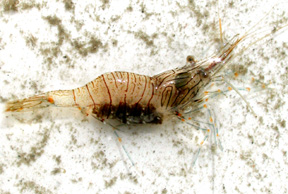Paging Dr. Karena!
There's something about using a syringe that makes me feel so.... medical!
Sometimes one of our animals becomes sick or is just not acting like its normal, active, hungry self. When this happens, we usually put it on antibiotics. We do this by injecting its normal diet of fish chunks with Baytril or chloramphenicol. However, when the animal refuses to eat, we need to try and tempt it with something yummier, which usually translates to live prey. This ends up being something like grass shrimp which we usually have on hand.
Now, you may be wondering how I go about getting the antibiotic into something as squirmy as a shrimp (or you may be wondering just how squirmy a shrimp is, in which case the answer is very much so). Well, wonder no more faithful readers for I shall enlighten you. Grass shrimp are very small and only grow to a maximum of about 2 inches. Most of the ones we feed to the cephalopods never even reach that size (MUAHAAHAHAHA....ahem). You may think it would be easiest to simply inject the antibiotic into the underside of the shrimp which is the softest side, however this typically results in a very inanimate shrimp which isn't very interesting to an octopus or cuttlefish, especially one not having such a great day. So it's actually best to try and gently insert the needle just under the carapace on the back and inject the antibiotic that way. All of this needs to be done while carefully holding onto the shrimp which obviously isn't thrilled with the whole procedure and would rather take its chances bouncing off into the unkown (don't ask me why, shrimps have small brains).
However, it's worth it when the your little invalid octopus or cuttlefish realizes what a special treat it's getting :)


0 Comments:
Post a Comment
<< Home